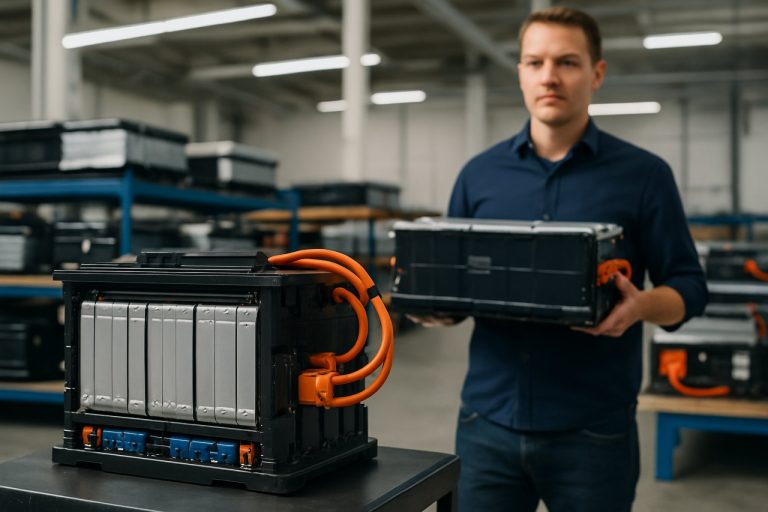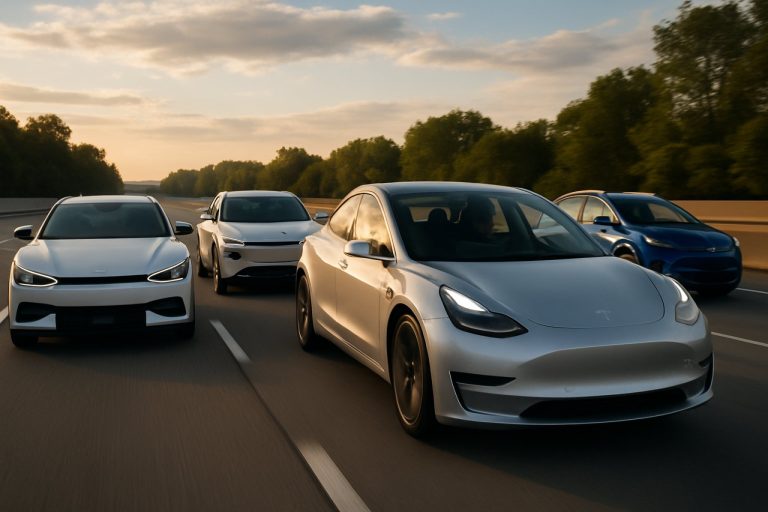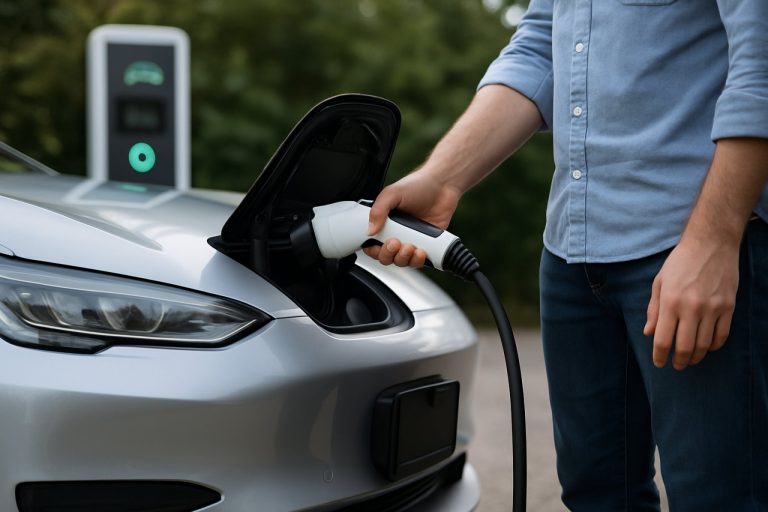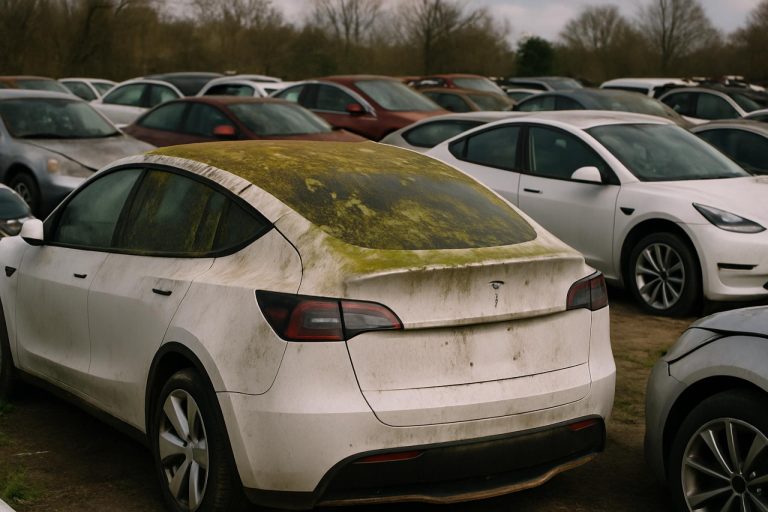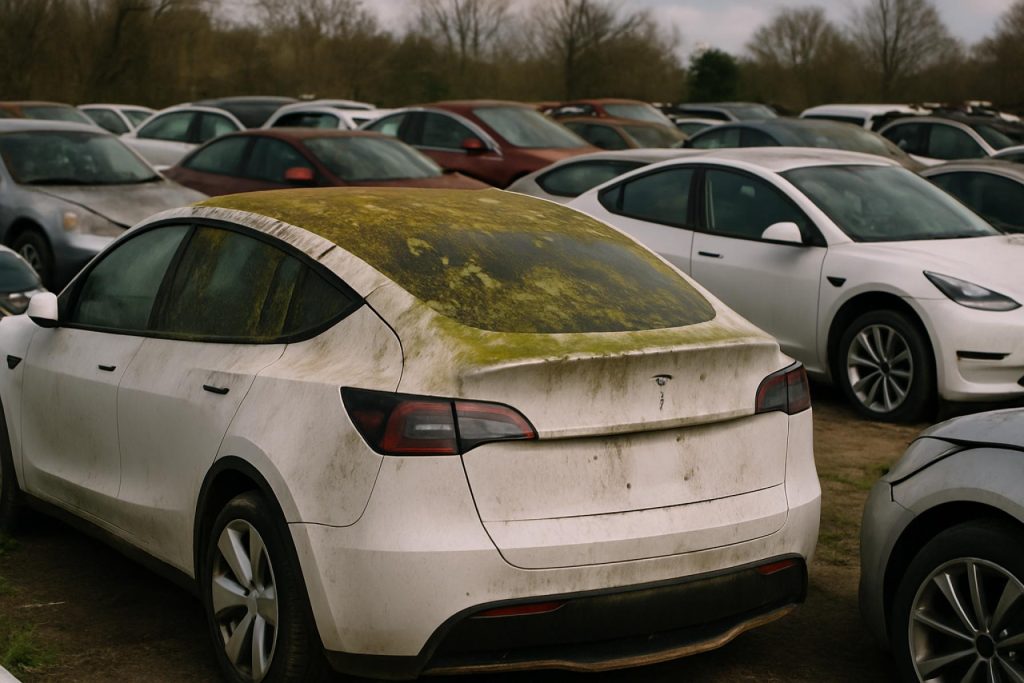
- Australia faces a growing crisis as many nearly-new electric vehicles (EVs) are being scrapped due to minor damages, largely because of complex repair requirements and a shortage of skilled EV mechanics.
- High-voltage batteries and intricate wiring demand specialized expertise, inflating repair costs and sometimes making it cheaper for insurers to write off even slightly damaged EVs.
- Existing repair shops struggle with regulatory hurdles and limited access to certified training programs for EV repairs, especially outside major cities.
- Proposed regulations may require all mechanics to be EV-certified, potentially reducing the workforce and further increasing repair costs.
- Industry leaders stress the urgent need for widespread technician training, reliable access to diagnostic tools, and streamlined regulations to support Australia’s ambitious EV adoption goals.
A shapely, untouched electric car waits in the harsh sunlight of an Australian scrapyard, draped beneath a dusty tarp. The vehicle—a gleaming BYD Atto 3 with only 300 kilometers on the odometer—stands as a silent testament to an invisible crisis gripping the electric vehicle (EV) revolution down under. Its flaw? Minor rear-end damage. Its fate? Written off by its insurer, considered simply not worth the trouble—and emblematic of a wider problem facing early electric adopters.
Across Australia, a surprisingly large number of nearly-new EVs find themselves abandoned due to a confluence of repair obstacles and industry growing pains. Unlike their combustion-engine cousins, electric cars have intricate wiring, high-voltage batteries, and other specialized components that require advanced expertise to repair. Yet, the industry’s fledgling repair network limps behind the surging demand: there just aren’t enough skilled mechanics with the know-how to resurrect wounded EVs.
Mechanics and repair shops face a maze of regulations and a shortage of accredited training programs. Many panel beaters must leap through expensive, time-consuming hoops just to secure the appropriate qualifications for EV repairs. As a result, restoration costs soar, sometimes exceeding the actual value of the car—making it cheaper for insurers to scrap the vehicle rather than fix it. The cost of replacing, diagnosing, or repairing a battery—often the most expensive part of an EV—can be prohibitive.
While major players like Tesla have established service ecosystems, many other brands lag behind. Smaller shops, particularly in regional areas, lack access to sophisticated diagnostic tools and certified parts. The challenge intensifies as more families and businesses pivot toward electric fleets—by 2030, Australia hopes to see more than half of new car sales comprised of EVs or hybrids.
A looming policy shift in New South Wales threatens to worsen the pinch. Proposed regulations may soon require all mechanics, even those merely changing tires, to undergo mandatory EV and hybrid certification courses. Advocates agree that working near high-voltage batteries demands rigorous safety standards—these batteries can discharge enough energy to prove fatal if mishandled. Yet, critics argue that the new rules, while well-intentioned, could squeeze the already limited pool of qualified repairers, pushing costs even higher and leaving more damaged vehicles languishing dead on arrival in parking lots and junkyards.
Industry leaders, such as the Australian Automotive Aftermarket Association, voice serious misgivings. With fewer than ten percent of mechanics formally trained for electric cars, many fear an exodus of independent service providers if legislative hurdles become insurmountable. And yet, proper training in high-voltage systems is nonnegotiable: the potential risks—from catastrophic electric discharge to fire—demand a careful, coordinated approach.
The takeaway? Behind the EV boom, Australia confronts a silent emergency. The green revolution rests not only on bold sales targets or government incentives but also on competent, accessible repair networks. Without sustained investment in technician training, innovative safety protocols, and a smarter regulatory path, the nation’s dream of sustainable mobility risks stalling in the dusty shadows of its own scrapyards.
For more on global innovation and automotive trends, explore Google. Electric vehicles herald a cleaner, smarter future—but only if the road to repair is as robust as the road ahead.
The Surprising Truth Behind Australia’s EV Graveyards: What Every Future Owner Needs to Know
The Explosive Growth of Electric Vehicles (EVs) in Australia—and the Hidden Perils
Australia’s bold push towards electric vehicle adoption is facing a little-understood obstacle: a repair ecosystem struggling to keep pace. The case of the almost-new BYD Atto 3—abandoned after minor damage due to repair complexity and insurance shortfalls—is just the tip of the iceberg. Here, we dig deeper with additional facts, industry insights, expert commentary, and actionable recommendations to help readers, car owners, and investors understand the wider implications.
—
Key Facts That Weren’t Fully Explored
1. Battery Replacement Costs Are Staggering
The battery can account for up to 40% of an EV’s total cost. Replacement can range from $8,000–$20,000 AUD (source: [NRMA](https://www.mynrma.com.au)), making even minor battery damage cost-prohibitive.
2. Insurance Gaps & Higher Premiums
Many Australian insurers charge higher premiums for EVs due to the presumed cost and complexity of repairs ([Canstar](https://www.canstar.com.au)). Claims for minor damage often result in “economic write-offs,” even when the vehicle is technically repairable.
3. Parts Availability Is a Bottleneck
Unlike gasoline vehicles, EV parts supply chains are not mature in Australia. Replacement components, especially batteries and complex electronics, must often be shipped internationally, causing lengthy delays.
4. Lithium-Ion Battery Safety Concerns
Damaged batteries are a fire hazard—even after a collision that appears minor. Specialized equipment and storage facilities are required, frequently unavailable at small repair shops.
5. Repair Technician Shortage Is Global
Only about 10% of Australian mechanics are certified to handle high-voltage EV repairs. Globally, this is a trend—experts at the [International Energy Agency](https://www.iea.org) warn of a skills gap as EVs scale up.
6. Recycling and Waste Challenges
Unrepaired EVs risk ending up in landfills. Unlike conventional cars, their batteries require specialized recycling, and improper handling is environmentally hazardous ([Australian Battery Recycling Initiative](https://www.batteryrecycling.org.au)).
7. Market Trends: Second-Hand EV Market Stagnates
A thriving used-EV market hinges on affordable repairs. As more EVs age, expect more to be scrapped if costs and repair skills don’t catch up.
—
How-To Steps: What Owners Can Do
1. Choose Brands With Robust Service Ecosystems
– Prioritize manufacturers with established repair networks (e.g., Tesla, BYD, Hyundai).
2. Ask Insurers about EV-Specific Coverage
– Confirm repair networks and write-off thresholds.
3. Consider Subscription Models
– Some brands offer battery leasing or comprehensive service packages mitigating high repair costs.
4. Pre-Purchase Inspection
– Have a certified EV mechanic inspect any used EV for battery health and prior repairs.
5. Advocate for Policy Change
– Support calls for government subsidies for mechanic training and streamlined certification processes.
—
Life Hacks & Real-World Cases
– Hack: Some EV owners in Europe use “battery refurbishment” services that repair or replace faulty cells at a fraction of the cost of a new battery—potentially coming to Australia as demand rises.
– Use Case: Fleets (taxis, delivery vehicles) adopting EVs are entering “preventive maintenance pacts” with specialized workshops, minimizing downtime and repair shocks.
—
Feature & Pricing Comparisons
– BYD vs. Tesla Servicing: Tesla’s local presence and direct service model offer faster turnaround. BYD, while aggressively priced, is still building its authorized network, leading to variable customer experiences.
—
Security & Sustainability
– Security: Poorly repaired high-voltage systems can spark fires or fatal shocks. Only certified repairers should handle battery/inverter jobs.
– Sustainability: Australia must scale up EV battery recycling infrastructure to handle the expected influx of end-of-life batteries by 2030.
—
Industry Trends & Market Forecasts
– Market Forecast: By 2026, Australia’s EV stock is forecast to quadruple (source: [BloombergNEF](https://about.bnef.com)), intensifying repair capacity strains.
– Trend: The rise of mobile repair units serving urban and remote locations is likely—mirroring Europe’s rapid response EV techs.
—
Controversies & Limitations
– Certification Backlash: Critics argue Australia’s proposed universal EV certification is overkill for simple tasks (like tire changes) and will strangle small workshops already facing labor shortages.
– Access to Diagnostic Tools: Some brands restrict diagnostic software to selected repairers, raising questions over right-to-repair and consumer choice.
—
Pros & Cons Overview
Pros:
– Lower fuel costs and emissions.
– Smooth performance and advanced features.
– Lower scheduled maintenance (no oil changes, fewer moving parts).
Cons:
– High repair costs and limited specialist mechanics.
– Long parts wait times for some brands.
– Insurance write-off threshold easily met after minor damage.
—
Most Pressing Reader Questions Answered
Q: Can I repair an EV after a minor crash?
A: Possibly, but battery damage—even minor—may cause insurers to write off the car due to safety and cost. Insist on an independent assessment.
Q: Is an extended warranty or maintenance plan worthwhile?
A: Yes, especially if you live outside major cities or are buying a non-Tesla brand.
Q: Will repair costs go down?
A: Over time, as more mechanics are trained and part supply chains mature. But shortages and high costs will persist in the near term.
Q: What should I look for in EV insurance?
A: Check if the policy covers battery damage, to what threshold, and which repair shops you’re restricted to.
—
Quick Tips & Actionable Recommendations
1. Dig into after-sales support before buying—strong local presence trumps a lower upfront price.
2. Encourage your repair shop to begin EV technician training—demand is already surging.
3. Store your EV’s battery at MIDRANGE charge if in storage after minor accident—reduces fire risk.
4. Stay informed: Track developments via trusted industry sources like International Energy Agency (IEA) or Canstar for insurance updates.
—
Bottom Line
Australia’s EV journey is advancing quickly—but the repair and service industry must catch up. Owners, insurers, and policymakers face a choice: invest in skills and infrastructure today or risk derailing gains in clean mobility tomorrow. Before purchasing an electric vehicle, vet your brand’s service network, know your insurance terms, and don’t hesitate to ask your government for clear, safe, and affordable repair pathways.
For the latest in technology and automotive trends, visit Google.
